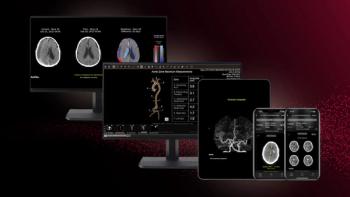
PET Determines Effectiveness of Hodgkin Lymphoma Treatment
Using PET during treatment for Hodgkin lymphoma may help determine earlier effectiveness of chemotherapy.
Patients with Hodgkin lymphoma (HL) who undergo PET imaging after two cycles of chemotherapy have an increased rate of remission and decrease in toxic effects from treatment, according to a study published in the
Researchers from the United States and Canada conducted a phase II clinical trial to evaluate the use of early interim fluorodeoxyglucose PET (FDG-PET) imaging and its utility in response-adapted therapy for stage III to IV classic HL.
A total of 331 of an initial group of 358 HIV-negative patients were evaluated in this study. Their median age was 32. Fifty-two percent of the patients were diagnosed with stage III HL, 48% with stage IV; 49% had an International Prognostic Score of 0 to 2, and 51% scored 3 to 7.
All subjects underwent PET scans after two initial cycles of doxorubicin, bleomycin, vinblastine, and dacarbazine (ABVD) to gauge treatment progress, and then were labeled PET2 positive or negative. Patients who were labeled PET2-negative (Deauville score 1 to 3) received an additional four cycles of ABVD. Those who were PET2-positive (Deauville score 4 to 5) were switched to treatment with escalated bleomycin, etoposide, doxorubicin, cyclophosphamide, vincristine, procarbazine, and prednisone (eBEACOPP) for six cycles. Median follow-up was 39.7 months.[[{"type":"media","view_mode":"media_crop","fid":"47938","attributes":{"alt":"Oliver Press, MD, PhD","class":"media-image media-image-right","id":"media_crop_5093886719764","media_crop_h":"0","media_crop_image_style":"-1","media_crop_instance":"5699","media_crop_rotate":"0","media_crop_scale_h":"0","media_crop_scale_w":"0","media_crop_w":"0","media_crop_x":"0","media_crop_y":"0","style":"height: 272px; width: 180px; border-width: 0px; border-style: solid; margin: 1px; float: right;","title":"Oliver Press, MD, PhD","typeof":"foaf:Image"}}]]
Findings were gathered from a central review of the interim PET2 scan performed in the evaluable patients: 271 (82%) of the patients were PET2-negative and 60 (18%) were PET2-positive. Of 60 eligible PET2-positive patients, 49 switched to eBEACOPP as planned and 11 declined.
The Kaplan-Meier estimate for two-year overall survival was 98% and the two-year estimate for progression-free survival (PFS) was 79%. The results showed that the two-year estimate for PFS in the subset of patients who were PET2-positive after two cycles of ABVD was 64%. Both nonhematologic and hematologic toxicities were greater in the eBEACOPP arm than in the continued ABVD arm.
"The goal of cancer treatment is to cure as many people as possible with as little toxicity as possible," lead author Oliver Press, MD, PhD, acting director of the Clinical Research Division and the acting senior vice president of Fred Hutchinson Cancer Research Center and a professor of medicine at the University of Washington, said in a release. "We found a promising way to do that by tailoring treatment to Hodgkin patients, an approach which could lead to a new standard of care."
The authors concluded that basing HL therapy on interim PET imaging after two cycles of ABVD is promising, leading to higher than expected two-year progression-free survival in this patient group.
Newsletter
Stay at the forefront of radiology with the Diagnostic Imaging newsletter, delivering the latest news, clinical insights, and imaging advancements for today’s radiologists.




























